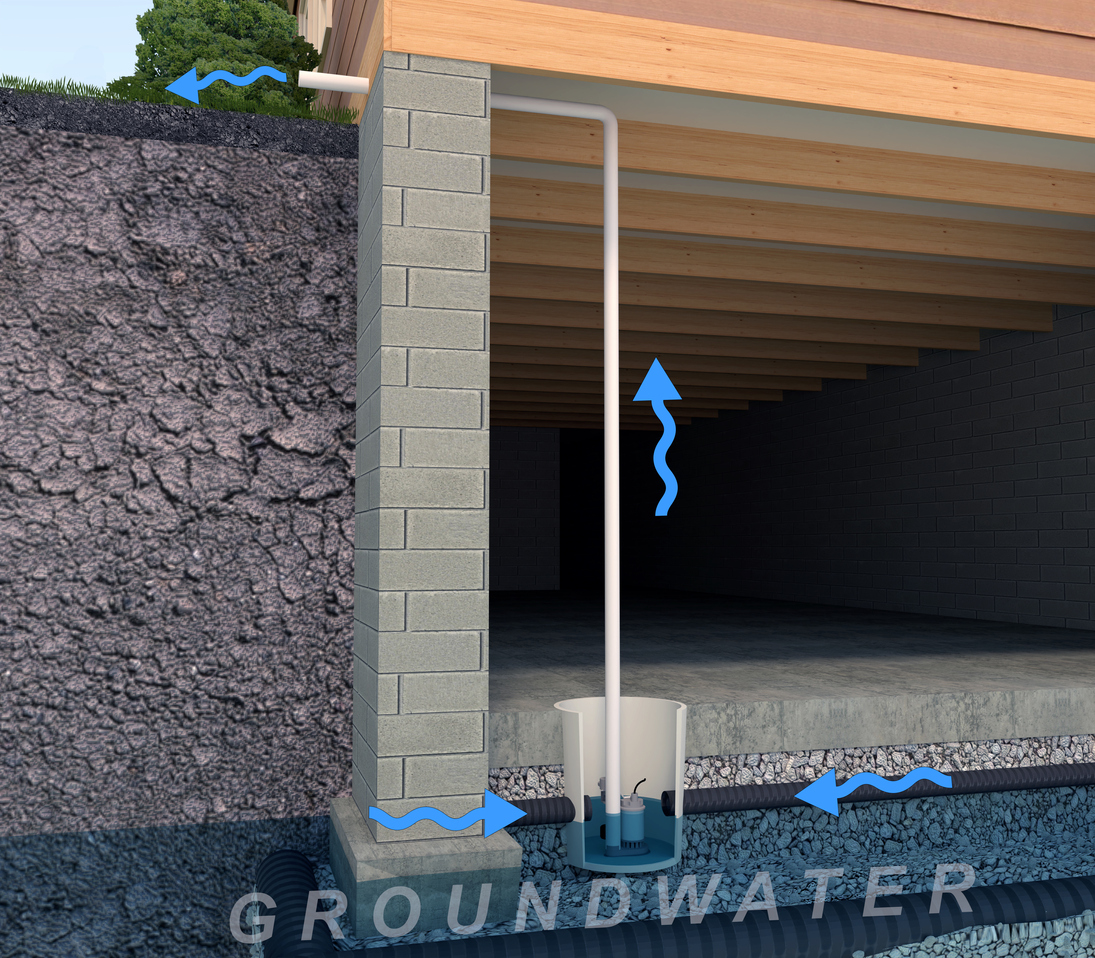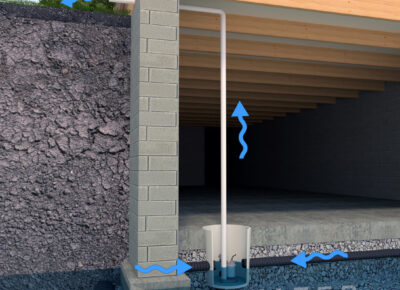Let’s look at how a sump pump works. Basements can be used for anything from extra storage space, to a beautifully finished living space to be used by the family. Regardless of the use, no homeowner wants a wet, mold filled basement. Even worse, every home owners fear of a flood. A sump pump will help manage the water table with a few factors that contribute to a flooding basement. A few common factors that affect the water table and basement water issues are the property location, elevation, soil conditions, outside landscape and grading. These all play a role in the water to be managed. Some basements are simpler then other due to conditions. At the end of the day a sump pump will protect your home and basement from flooding regardless of what is causing the flooding. A drain system with a sump pump are designed to deal with a basement that would flood without a plan in place A proper functioning sump pump and system is able to control the water in the right way. No home owner wants to deal with property damage cost or structural safety issues from a flooded basement.
A sump pump is simply that, a pump that pumps water controlled with a float to turn on and off at the right time. This pump will be installed with piping connected to it, in order to move the water through piping system to a desired location. (Typically outside to a designated drainage location) The pumps are typically designed with a built in switch to operate when called to action. These pumps can be powered by battery, water pressure, or electricity. Typically we rely on electric powered sump pumps to do most of the work regardless of the application. These are the workhorse of the operation. Second line of defense for a back up plan would be a water powered pump or battery back up pump.
Collecting the water to be pumped is key. With no way to collect the water to a certain location, the pump would remain useless. Most residential homes have a pit installed in the basement floor below grade to collect water to a point a sump pump can discharge the water to a desired location. This pit is also coupled with a french drain below grade to guide the water below the flooring into a pit. This 4” drain piping is designed to collect water with perforated piping below the floor and guide it to the pit. To guide water down from basement walls often material is fastened to the walls to guide water down walls inside if water penetrates the basement walls. This should all happen below the concrete finished floor. This should be placed along the concrete footing of the house to ensure a dry concrete floor in the basement to be used by a homeowner.
This water being pumped must go to a designated drainage area. This often is a garden area, lawn, creek, or pond close to the house. Ideally this needs to be taken as far from the foundation as possible. Many places have building codes or plumbing codes where and where not to drain this water. Typically municipalities do not allow the sump pump to drain into the sanitary sewer. This water does not need to be treated by the sewer plant insuring cost to the tax payer treating clean water. This can be a fine-able offense in some locations. Minimizing clean water being treated at treatment plants has become more important to not leave a footprint on our environment. Planning all the working parts of this system are key to it functioning properly and managing basement water issues.
See How a Sump Pump Works


